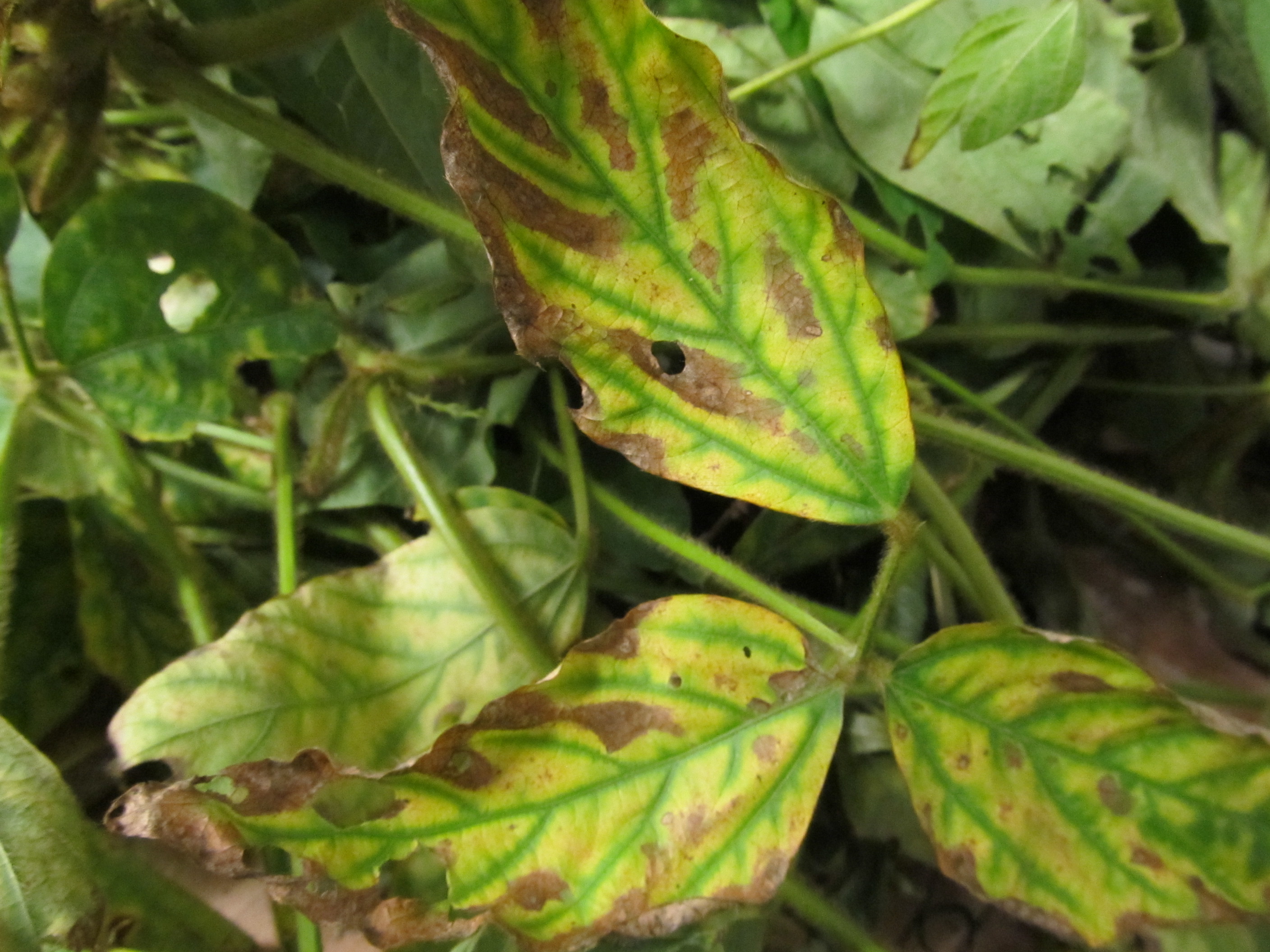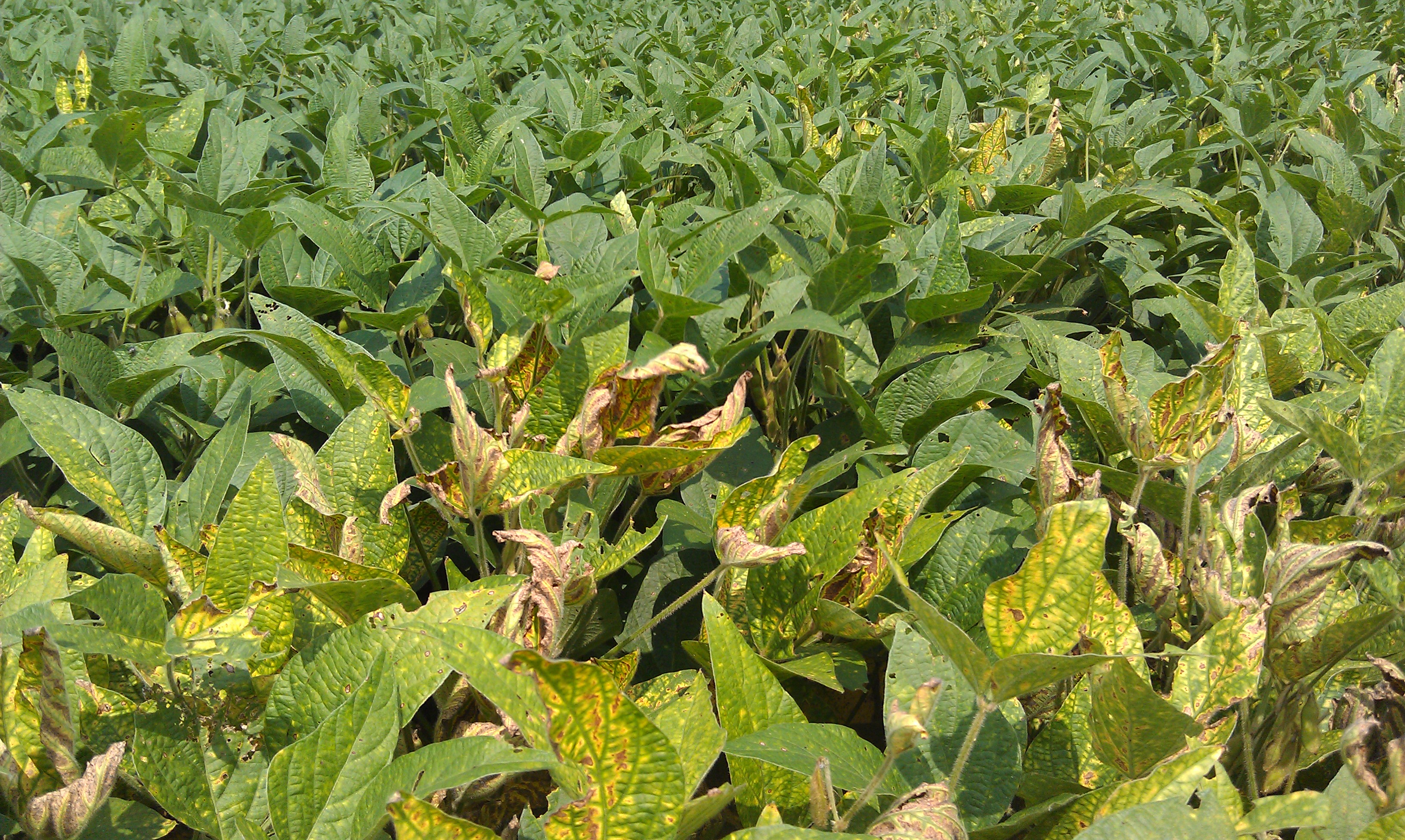We are receiving reports and samples of soybean with symptoms of Brown Stem Rot (BSR) on an almost daily basis at the Tidewater AREC. The most obvious symptom of the disease is interveinal chlorosis and necrosis of the leaves  though this can be indicative of other pathogens and should not be considered diagnostic. “Look-alike” diseases we have seen this year and how to distinguish them from BSR are indicated in the Table below. A few of the soybean samples submitted to the Tidewater AREC have been diagnosed with Stem Canker and one sample had signs/symptoms of Sudden Death Syndrome (SDS, we are in the process of confirming this with a root/stem biopsy).
though this can be indicative of other pathogens and should not be considered diagnostic. “Look-alike” diseases we have seen this year and how to distinguish them from BSR are indicated in the Table below. A few of the soybean samples submitted to the Tidewater AREC have been diagnosed with Stem Canker and one sample had signs/symptoms of Sudden Death Syndrome (SDS, we are in the process of confirming this with a root/stem biopsy).
Depending on the region, Brown Stem Rot is reported as being either insignificant or economically important in soybean. In south-eastern Virginia, Dr. Pat Phipps has not previously observed the severity of BSR that is being reported this year. In previous years, it was common to see diseased and healthy plants side-by-side with diseased plants scattered throughout the field. This year we have seen some large areas up to an acre with all the plants exhibiting symptoms of BSR. The increased incidence and severity of the disease is likely due to a combination of factors including the wet weather we have had this year as well as increased soybean production and shorter rotations out of soybean. The fungus causing BSR (Phialophora gregata) overwinters on soybean residues and builds up in the soil with soybean cropping. Severity of BSR and yield-reducing potential has been associated with fungal population levels in the soil, so reducing inoculum by rotating out of soybean for 3-5 years is one of the best management strategies for BSR.
The increased incidence and severity of the disease is likely due to a combination of factors including the wet weather we have had this year as well as increased soybean production and shorter rotations out of soybean. The fungus causing BSR (Phialophora gregata) overwinters on soybean residues and builds up in the soil with soybean cropping. Severity of BSR and yield-reducing potential has been associated with fungal population levels in the soil, so reducing inoculum by rotating out of soybean for 3-5 years is one of the best management strategies for BSR.
|
Plant Part |
BSR |
SDS |
Stem Canker |
|
Roots |
healthy |
necrosis |
healthy |
|
Outer stem |
healthy |
healthy |
dark, reddish-brown sunken canker starting at node |
|
Interior stem (pith) |
brown pith (center) |
tan to light brown cortex; white/green healthy pith |
slight browning at nodes to completely deteriorated stems |
|
Leaves |
interveinal chlorosis and necrosis |
similar to BSR, leaflets may detach from petioles |
general yellowing to necrosis |
